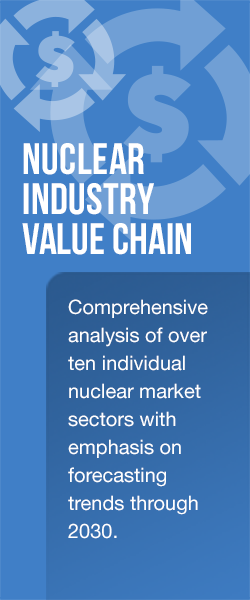Yellow(cake) Journalism
Many of you may have seen the Bloomberg story last week entitled “Lehman Sits on a Bomb of Uranium Cake as Prices Slump.” We did, since as part of our News Headlines service, we routinely track news stories relating to nuclear fuel and nuclear power. You could almost hear a collective groan go up in our company as we noted the sensationalistic nature of the title coupled with the general lack of a story from a uranium market perspective.
Nonetheless, the Bloomberg story sent off a chain reaction (pardon the pun) with which we had to contend. First, it prompted the New York Post to write its own story on the subject. Not to be outdone in the area of sensationalistic titles, the Post titled its story, “Lehman Has Tons of Nuke ‘Wa$te.’” It repeated the assertion that Lehman had enough uranium to make a bomb, and for good measure added the claim that nobody besides North Korea was willing to pay the price Lehman wants.
The Post contacted us and quoted (or rather misquoted) Jonathan Hinze, our Vice President, International Operations, after we asked that the information provided be kept off of the record. Aside from the quote, the story contained a number of other inaccuracies.
Next, Fox News, seeing the coverage in the New York Post and the fact that we were referenced, picked up on the story and contacted us. While we could understand the general interest in the story since Lehman was involved, we noted that for those of us in the nuclear industry, Lehman holding this material was not a major story. We pointed out that 43 million pounds were transacted in 2008 and about 10 million so far in 2009 (see discussion on page 6), so while 450,000 pounds is not a trivial amount, it does not change the overall complexion of the market, and had largely been discounted. Furthermore, we noted that that the bomb reference in the story was completely gratuitous.
Still, Fox could not resist the bomb and toxic material reference in the lead-in to its Lehman story. However, Fox did clearly point out that the Lehman material was not going to be used to make a bomb and that the quantity was roughly enough to power a reactor for a year. In general, the story was well researched and put things in the proper perspective, living up to Fox’s “fair and balanced” mantra.
Of course, the great irony of the timing of these stories is that the price of uranium is now increasing, a further affirmation that Lehman’s holding of uranium is a non-story from the larger standpoint of where the uranium market is heading.
Our feeling is if reporters are intent on making the bomb connection, they should talk about how erstwhile bomb material is being consumed in U.S. nuclear reactors. It may be just as unnecessary for the point of the story, but at least it’s a true statement. According to USEC’s website, over 14,000 warheads had been eliminated by the Megatons to Megawatts program as of the end of last year. Or perhaps every story about uranium could equate the amount of uranium in question to how much CO2 it displaces when burned in a reactor. Although we don’t read press stories about the coal market, we doubt that they preface everything by saying “the carbon-producing, atmospheric-polluting fuel” when talking about coal, although this could be changing with the recent EPA ruling (see story on page 2).
This is not the first (and certainly not the last) time that reporters will use sensationalistic titles or get things wrong about the uranium market. However, aspects of the past week’s stories seemed especially egregious, and that is why we elected to write about it here.
Don’t get us wrong; there are some great energy reporters out there. Ann Davis of The Wall Street Journal comes immediately to mind, and there are a number of others as well. For our part, we are glad to share our data and time with reporters doing stories on nuclear fuel and nuclear power. Often, this requires quite an education process that we are happy to undertake. And this education process is not trivial. For example, we have had to answer the following question: “What else is uranium used for (besides making bombs).”
We write off those organizations that misquote us, sensationalize or twist things that we say to their point of view. We happily continue to cooperate with those that are making an honest effort to cover this subject matter and present a balanced view. Given the dual-use nature of uranium, we believe that a higher standard should be in place for the way nuclear fuel issues are covered.
By the way, this is on the record.


